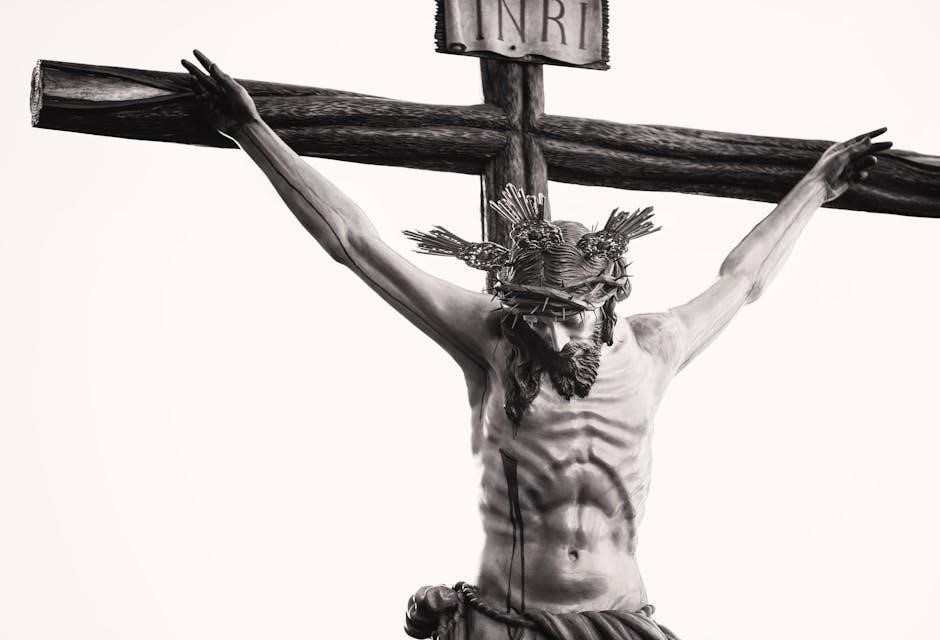bohme trumpet concerto pdf
Oskar Böhme’s Trumpet Concerto⁚ A Comprehensive Overview
Oskar Böhme’s Trumpet Concerto, a Romantic-era masterpiece, exists in various versions and arrangements․ Scores and recordings are available online, including PDF downloads and online sheet music․ The F minor adaptation is popular, utilizing a B-flat trumpet․ Different editions feature piano accompaniment or full orchestral scores․
Availability of Scores and Recordings
Finding scores and recordings of Oskar Böhme’s Trumpet Concerto is surprisingly straightforward in the digital age․ Numerous websites offer free PDF downloads of the score, often in various arrangements․ These range from solo trumpet and piano reductions, perfect for practice or smaller performances, to the full orchestral score․ The ease of access to these digital resources has undoubtedly contributed to the concerto’s growing popularity among both amateur and professional trumpet players․ While some sites may require registration or a small fee for high-quality, professionally formatted PDFs, many free options exist, providing readily available access to this relatively obscure but captivating work․ The availability of MP3 recordings further enhances the accessibility of Böhme’s concerto, allowing listeners to familiarize themselves with the work before tackling the score․ These online resources democratize access to the piece, making it less reliant on traditional publishing houses and widening its potential audience significantly․ The convenience of digital distribution stands in stark contrast to the challenges faced by musicians in the past, who relied on physically acquiring sheet music through specialized channels․
Different Versions and Arrangements
Oskar Böhme’s Trumpet Concerto exists in several forms, reflecting both the evolution of trumpet performance practice and the diverse needs of musicians․ The original version, composed in E minor for an A-pitched trumpet, is less frequently encountered today due to the obsolescence of that instrument․ The more common modern performance version transposes the piece to F minor, accommodating the B-flat trumpet prevalent in contemporary orchestras․ This transposition necessitates adjustments to the original orchestration․ Beyond the key changes, various arrangements cater to different performance settings․ Reduced versions for trumpet and piano are readily available, offering an accessible alternative to the full orchestral score․ These simplified versions are popular choices for recitals and educational settings, allowing a wider range of performers to engage with Böhme’s work․ Furthermore, some editions may incorporate editorial revisions or performance suggestions, resulting in subtle variations between different published versions․ This diversity of editions, encompassing both original and adapted forms, ensures the concerto’s continued relevance and accessibility across different performance contexts and skill levels․
The Trumpet Concerto in F Minor⁚ A Popular Adaptation
The most widely performed version of Böhme’s Trumpet Concerto is its adaptation in F minor․ Originally written in E minor for an A-pitched trumpet, a now largely obsolete instrument, the transposition to F minor makes the work significantly more accessible to modern trumpet players․ The use of the B-flat trumpet in F minor facilitates easier performance and better integration within contemporary orchestral contexts․ This practical adaptation has undeniably broadened the concerto’s reach and popularity․ While the F minor arrangement alters the original tonality, it preserves the essence of Böhme’s compositional style and the emotional depth of the music․ The shift in key doesn’t fundamentally change the melodic lines or harmonic structure, ensuring that the core musical experience remains largely intact․ This readily available version, found in numerous publications and online resources, has cemented the F minor adaptation as the standard for contemporary performances and study, ensuring the continued appreciation and performance of this important Romantic-era work for trumpet․
Performing Editions⁚ Piano Accompaniment and Full Orchestral Scores
Oskar Böhme’s Trumpet Concerto exists in several performing editions, catering to diverse performance needs and resources․ A popular choice for solo recitals or educational settings is the version with piano accompaniment․ These editions reduce the orchestral forces to a solo piano part, maintaining the essential melodic and harmonic structures of the original composition․ This simplified arrangement allows for intimate performances where a full orchestra is unavailable, making the concerto accessible to a wider range of performers․ Conversely, full orchestral scores provide the complete, richly textured experience intended by Böhme․ These versions are ideal for professional orchestras and offer a more substantial and nuanced sonic palette․ The availability of both piano accompaniment and full orchestral scores ensures that Böhme’s concerto can be experienced in a variety of settings, from small chamber concerts to large-scale orchestral performances, ensuring its continued accessibility and relevance to performers and audiences alike․ The choice between these editions depends on the specific performance context and the desired level of orchestral support․
Digital Resources⁚ PDF Downloads and Online Sheet Music
The digital age has revolutionized access to musical scores, and Oskar Böhme’s Trumpet Concerto is no exception․ Numerous websites offer PDF downloads of the score, allowing musicians to readily obtain the music for study, rehearsal, or performance․ These readily available digital resources democratize access to the concerto, removing geographical and logistical barriers that might otherwise hinder its study and performance․ The convenience of digital distribution is undeniable; musicians can instantly download the sheet music, eliminating the need for physical purchasing and shipping․ Furthermore, online sheet music platforms often provide interactive features such as annotation tools and playback capabilities, enhancing the learning experience․ While the availability of free scores is a boon for many, caution is advised regarding the accuracy and completeness of these sources․ Always verify the authenticity and quality of the PDF before committing to its use․ Reputable sources will provide clear information about the edition and arranger, ensuring that the downloaded score is a faithful representation of the composition․ Exploring various online platforms may unveil different editions or arrangements, allowing for a comparative analysis and selection of the best-suited version for specific needs․
Historical Context and Composer’s Biography
Oskar Böhme (1870-1938), a German composer and trumpeter, crafted his Trumpet Concerto within the rich musical landscape of the late Romantic period․ Born in Potschappel near Dresden, he hailed from a musical family; his father, Wilhelm Böhme, was also a renowned trumpeter․ This familial legacy undoubtedly influenced Oskar’s early musical development and his subsequent dedication to composing works for the trumpet․ His musical style reflects the late Romantic era’s emphasis on expressive melodies, rich harmonies, and virtuosic passages․ The Trumpet Concerto, written originally in E minor for an A-pitched trumpet, stands as a testament to the composer’s skill and understanding of the instrument’s capabilities․ The shift to F minor for modern performances, utilizing a B-flat trumpet, reflects the changing instrumental landscape of the 20th century․ Böhme’s broader compositional output included other works for brass instruments, further highlighting his contributions to the repertoire of brass chamber music․ Understanding Böhme’s life and the historical period in which he composed provides invaluable context for appreciating the nuances and significance of his Trumpet Concerto․
Analysis of the Three Movements
Böhme’s Trumpet Concerto unfolds in three distinct movements, each showcasing a unique facet of the composer’s style and the trumpet’s expressive potential․ The first movement, typically marked Allegro moderato, establishes a vibrant and energetic tone․ It features a captivating interplay between the solo trumpet and the orchestra, with passages of both lyrical beauty and dazzling virtuosity․ The second movement, often an Adagio religioso or similar tempo marking, offers a stark contrast․ This movement is characterized by its introspective and deeply emotional character, allowing for moments of profound lyrical expression from the soloist․ The trumpet’s expressive capabilities are showcased through its ability to convey a wide range of emotions, from quiet contemplation to passionate intensity․ The final movement, usually a brisk Rondo or Allegro scherzando, returns to a more lively and celebratory mood․ This movement is frequently characterized by its playful energy and virtuosic demands on the soloist, showcasing technical brilliance and melodic invention․ The interplay between the soloist and the orchestra remains a key feature, culminating in a triumphant and memorable conclusion․ A careful study of the score reveals intricate details in the orchestration and melodic lines, enriching the overall listening experience․
Reception and Legacy of the Work
Oskar Böhme’s Trumpet Concerto, despite its undeniable musical merit, has had a somewhat complex reception throughout history․ While initially appreciated within certain circles, its popularity fluctuated, partly due to the changing landscape of trumpet performance practices․ The original version, scored for an A-pitched trumpet, fell out of favor as B-flat trumpets became standard․ This necessitated adaptations and arrangements, sometimes impacting the original balance and intention of the composition․ However, renewed interest in historically informed performance practices has led to a resurgence of appreciation for Böhme’s work․ Modern trumpeters and scholars have actively championed the concerto, recognizing its technical demands and emotive depth․ The availability of scores in various formats, including widely accessible PDF versions online, has undoubtedly contributed to its increased accessibility and study․ This has allowed a broader audience to engage with the piece and has spurred new performances and interpretations, cementing its position within the trumpet repertoire․ While its journey has been marked by periods of relative obscurity, Böhme’s Trumpet Concerto is steadily gaining recognition as a significant and rewarding piece for both performers and listeners․
Notable Performances and Recordings
While a definitive list of every performance of Oskar Böhme’s Trumpet Concerto is unavailable, several notable recordings and performances showcase its enduring appeal․ The accessibility of the score in PDF format online has likely spurred numerous performances by both amateur and professional musicians worldwide, though documentation of these events may be limited to local concert programs or online community forums․ The lack of readily available comprehensive performance history online highlights a need for a more centralized archive documenting these performances․ However, the digital availability of the score certainly facilitates wider participation and dissemination of the music․ Specific recordings are not consistently cited across online sources, suggesting that while the work is performed and recorded, a definitive catalogue of high-profile performances and widely available recordings remains to be compiled․ This underscores a continuing need for research and documentation to fully appreciate the scope of the concerto’s influence and reach․ The piece’s enduring popularity, however, is evident in its continued appearance in the repertoire of trumpet players at various levels․
Related Posts

tu zona crypto book pdf
Dive into the world of cryptocurrency with our expert guide. Discover tips, tricks, and strategies for success in crypto trading and investing.

cronicas de una muerte anunciada pdf
Get the full “Cronicas de una Muerte Anunciada” book in PDF format instantly. Free download available now at mojopet.com.

the attributes of god pdf
Explore the divine qualities of God through our comprehensive PDF guide. Download now and deepen your spiritual understanding!